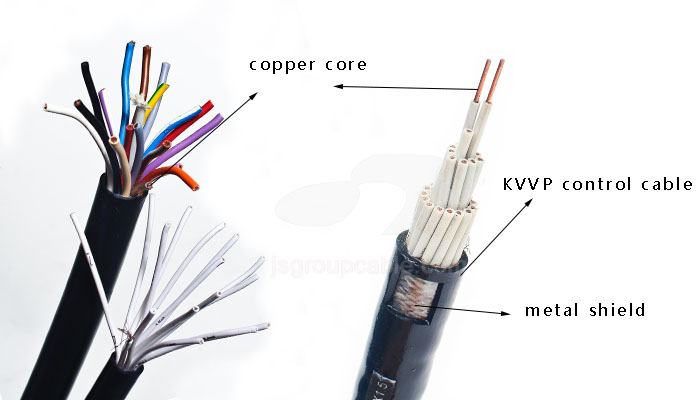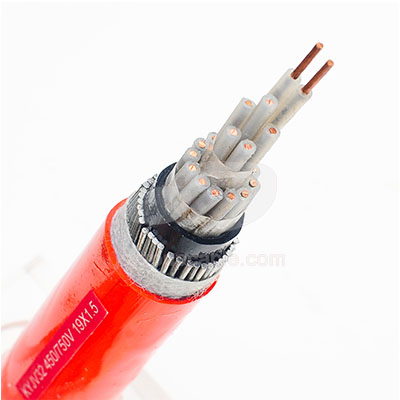- Offices Time:24 Hours Online
- Email:[email protected]
- WhatsApp:+8618339938759

Posted on February 14, 2023
Application of 600v PVC control cable
600v PVC control cable is a cable for protecting circuits, mainly used to transmit low-voltage voltage or current signals. The main material of this cable is polyvinyl chloride. Because this material has good insulation properties, it can be easily Good control circuit operation. Control cables are used in a wide range of applications, including some factories and mines and large energy sectors. There are many types of wire and cable products, and they are widely used in a wide range of fields, involving electric power, construction, communication, manufacturing and other industries, and are closely related to various sectors of the national economy. In real life, people always confuse the power line and the control line, it is difficult to distinguish which is the power line? Which is the control line? Now let’s introduce the relevant information of 600v PVC control cable.
KVV is a connection line used for control and protection lines in industrial and mining enterprises, energy and transportation departments, commonly known as control cables. It is mainly used in fixed occasions with high mechanical tension such as cable trenches, pipes, and shafts. In this article, I will talk to you about the selection and use of control cables.
Overview of 600v PVC control cable
The cables that connect from the control center to the various systems to transmit signals or control operating functions are collectively referred to as control cables. The early functions of the control cable were relatively simple, including: indicator light display, instrument indication, operation of relays and switchgear, alarm interlock system, etc. In recent years, due to the wide application of weak electricity and computer networks, new functions have put forward higher requirements for the selection and application of control cables.

Main series of control cables
The main products of control cables today are: PVC insulated control cables, natural styrene-butadiene rubber insulated control cables and polyethylene insulated control cables. In addition, there are two kinds of control cables with cross-linked polyethylene insulation and ethylene-propylene rubber insulation products.
The rated voltage of 600v PVC control cable is represented by U0/U. International has proposed 600/1000V products as the conventional product series of control cables. Currently we can also produce 600/1000V plastic insulated control cables. The rated voltage of rubber insulated control cables is 300/500V.
600v PVC control cable core is copper core, nominal section 2.5mm and below, 2~61 cores; 4~6mm, 2~14 cores; 10mm, 2~10 cores. Control cable working temperature: 65°C for rubber insulation, 70°C and 105°C for PVC insulation. Control cables used in computer systems generally use PVC, polyethylene, cross-linked polyethylene and fluoroplastic insulation products.
Measures to ensure the normal operation of control cables and prevent interference
In order to ensure that the control cable can reduce the scope of influence in the event of insulation breakdown, mechanical damage or fire, the national standard GB50217-91 “Code for Design of Electric Power Engineering Cables” stipulates: current, voltage, DC power supply and tripping control circuits, etc., need to be strengthened For reliability the two systems should use separate control cables.

After the 600v PVC control cable is put into operation, there are electrical interference problems between different core wires of the same cable and between cables laid in parallel.
The main causes of electrical interference are:
(1) Electrostatic interference caused by capacitive coupling between conductors due to applied voltage;
(2) Electromagnetic induction interference caused by energizing current. Generally speaking, electrical interference is more serious when there are high-voltage, high-current interference sources nearby. Due to the small distance between the core wires of the same cable, the degree of interference is much greater than that of adjacent parallel-laid cables.
For example, in the control circuit of the phase-separated operation circuit breaker in the ultra-high voltage substation, the three phases share one cable. Such an accident happened. The pulse of split-phase operation causes the thyristors of other phases to be triggered, resulting in false linkage of the three phases. With a separate cable, there are no more mishandling accidents.
Measures to prevent or mitigate electrical interference mainly include the following three aspects:
1.One spare core of 600v PVC control cable is grounded:
Practice has proved that when a spare core in the control cable is grounded, the amplitude of the interference voltage will be reduced to 25% to 50%, and it is easy to implement during the construction process, and the cost of the cable will not increase much.
2.A control cable should not be used for circuits that will have serious consequences when electrical interference occurs, including:
(1) Weak current signal control loop and strong current signal control loop;
(2) The loop between the low-level signal and the high-level signal;
(3) The weak current control circuits for each phase of the AC circuit breaker operating in separate phases should not use the same control cable. However, for each pair of round-trip wires in the weak current circuit, if they belong to different control cables, they may form a circular arrangement during the laying process, and a potential will be induced under the cross-linking of the electromagnetic wires. Similar power supplies, whose values may affect weak current circuits. Low-level parameter interference has a greater impact, so it is recommended to use control cables as round-trip wires.
Post categories
Most Popular Posts
-
The 136th Canton Fair welcomes you to participate!
October 12, 2024 -
High temperature cable introduction
July 26, 2024 -
Kenya Power and Energy Exhibition 2024
June 11, 2024 -
Introduction of rubber sheathed cable
June 5, 2024





